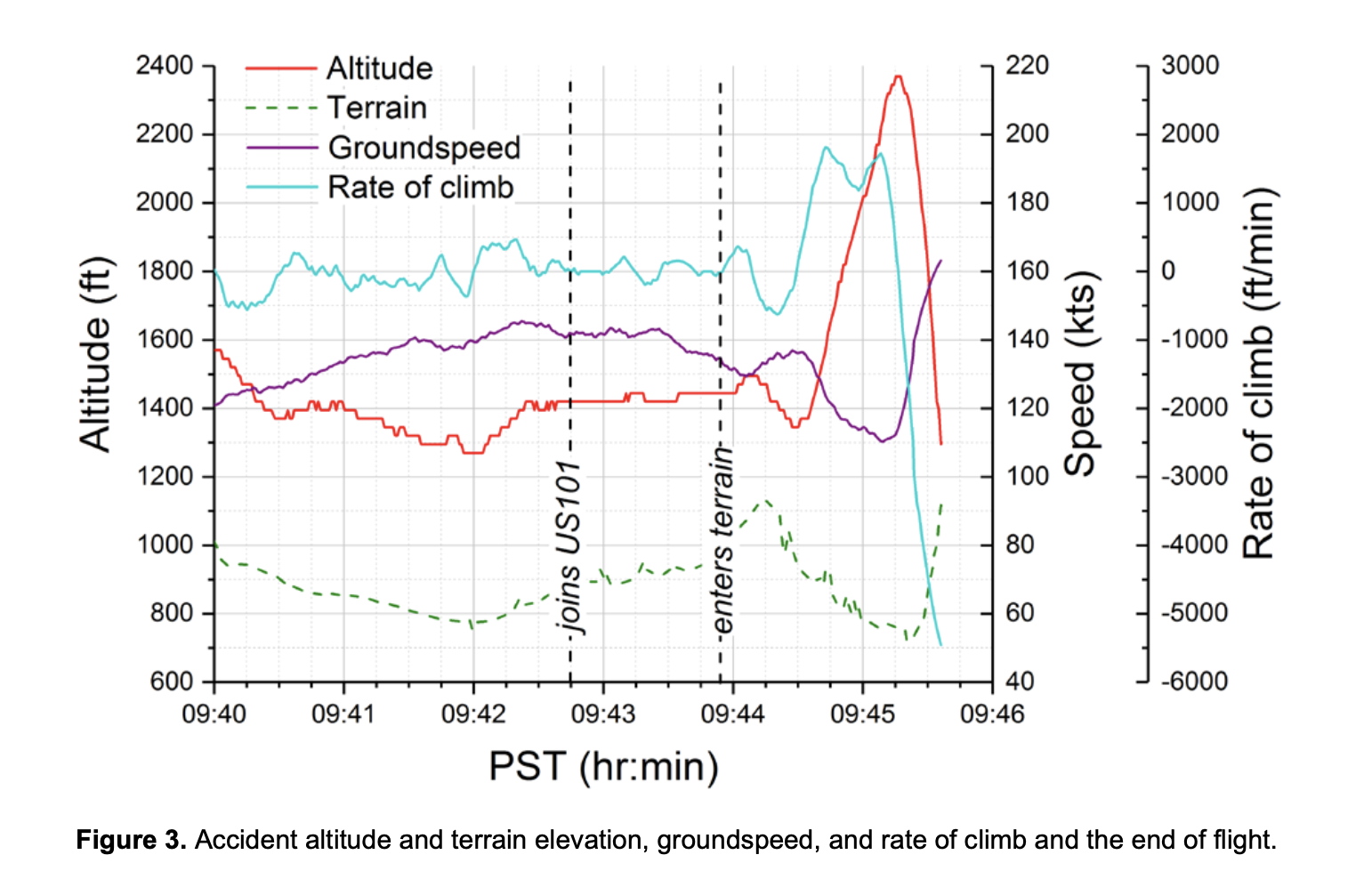
The NTSB is well-known for its thorough methods. Even when the cause of an accident seems apparent from the outset, they pursue every factual detail they can find. Even though it appeared the Island Express Helicopters pilot lost control after entering instrument meteorological conditions (IMC), and even though such accidents are common--on average, two per year among commercial helicopters--investigators looked carefully at mechanical and maintenance factors, meteorological and air traffic control factors to be sure that failures or errors in these areas did not contribute to the cause of the accident. No such issues were found.
It is important for investigators to be able to establish a timeline of events during the accident flight and to establish the aircraft’s attitude, speed, configuration and trajectory in detail. The best sources for this information are crash-hardened recorders--a flight data recorder (FDR) and a cockpit voice recorder (CVR). Since neither was on board the accident helicopter (the CVR originally installed had been removed), the investigative team had to devise other ways to plot the track of the aircraft. A performance study was done using FAA ADS-B data, which recorded latitude and longitude, pressure and geometric altitude, and inertial speeds. A performance specialist was able to reconstruct the flight path using this data.
The investigation moved on to operational, human performance and organizational factors. First on the list to examine were the pilot’s qualifications and experience. The pilot was 50 years old and lived near the company’s Long Beach offices. He obtained his first FAA rotorcraft certificate in 2001 at a school in Van Nuys, and upgraded his certificates to commercial, instrument and flight instructor in 2007-08. After instructing at the school for three years, he was hired by Island Express. He was charged with a Class B airspace violation in 2015, which he reported using the NASA Aviation Safety Reporting System (ASRS). He began S-76 training in late 2014 and became chief pilot and check airman on that helicopter in 2016. He was also qualified on the company’s Airbus AS350 helicopters.
Of the pilot’s total flight time of 8,577 hr., 1,250 were in the S-76. He had recorded 75 hr. of instrument time, but most of it (at least 68.2 hr.) was simulated instrument time. There were no ground or flight check failures on his record. He completed company safety management system (SMS) training in 2018 and training for “inadvertent IMC” multiple times, the last of which was in 2019.
Interviews with the company director of operations (DO), the FAA principal operations inspector (POI) and company pilots were favorable about the accident pilot. He was said to be skillful and proficient, although there were some undocumented stories about his taking occasional risks. Investigators found no issues arising from the pilot’s fatigue, medical condition, substance use or qualifications.
Island Express held a Part 135 on-demand certificate limited to day and night VFR only. (The NTSB noted that 411 out of 476 FAA-certificated Part 135 helicopter operators were VFR-only operators.) The company had 25 employees, including six pilots and two mechanics, and operated three S-76 and three AS350 helicopters. The company flew about 495 charter flights in 2019, including 13 flights for the accident client.
Investigators scrutinized Island Express’ policies, procedures and training and found no serious issues. The company had used well-known training vendors, and instructors from those vendors told investigators they taught Island Express pilots that when entering IMC they should fly straight and level, maintain heading, set power to 70-75% torque and establish a positive climb rate at 70-75 kt. The DO had issued repeated warnings about the dangers of flight in IMC. The company had canceled 150 flights due to weather in 2019, and 13 more in the two days before the accident flight.
As SMS is an ongoing focus of the NTSB, the company’s SMS program came in for detailed review. SMS programs are required for Part 121 air carriers but not yet for Part 135 operators. Island Express first established an SMS in 2013 using the services of a well-known vendor. Although the company had an SMS manual, conducted SMS training, kept records, held safety meetings and hired external auditors, the program had never been approved by the FAA.
One of the SMS tools Island Express used was a flight risk assessment form. Pilots could complete the form using a mobile application on their phone. The criteria on the risk form included: mission and operation, duty day and qualifications, weather, equipment and personal issues. This was the form the accident pilot used on the day of the accident flight. A score above 45 was considered an elevated risk and the pilot had to consult with his supervisor before flying. However, in the 14 months before the accident there had been no elevated risks.
Editor's Note: This is the second in a three-part series. The first covered the pilot's spatial disorientation.





